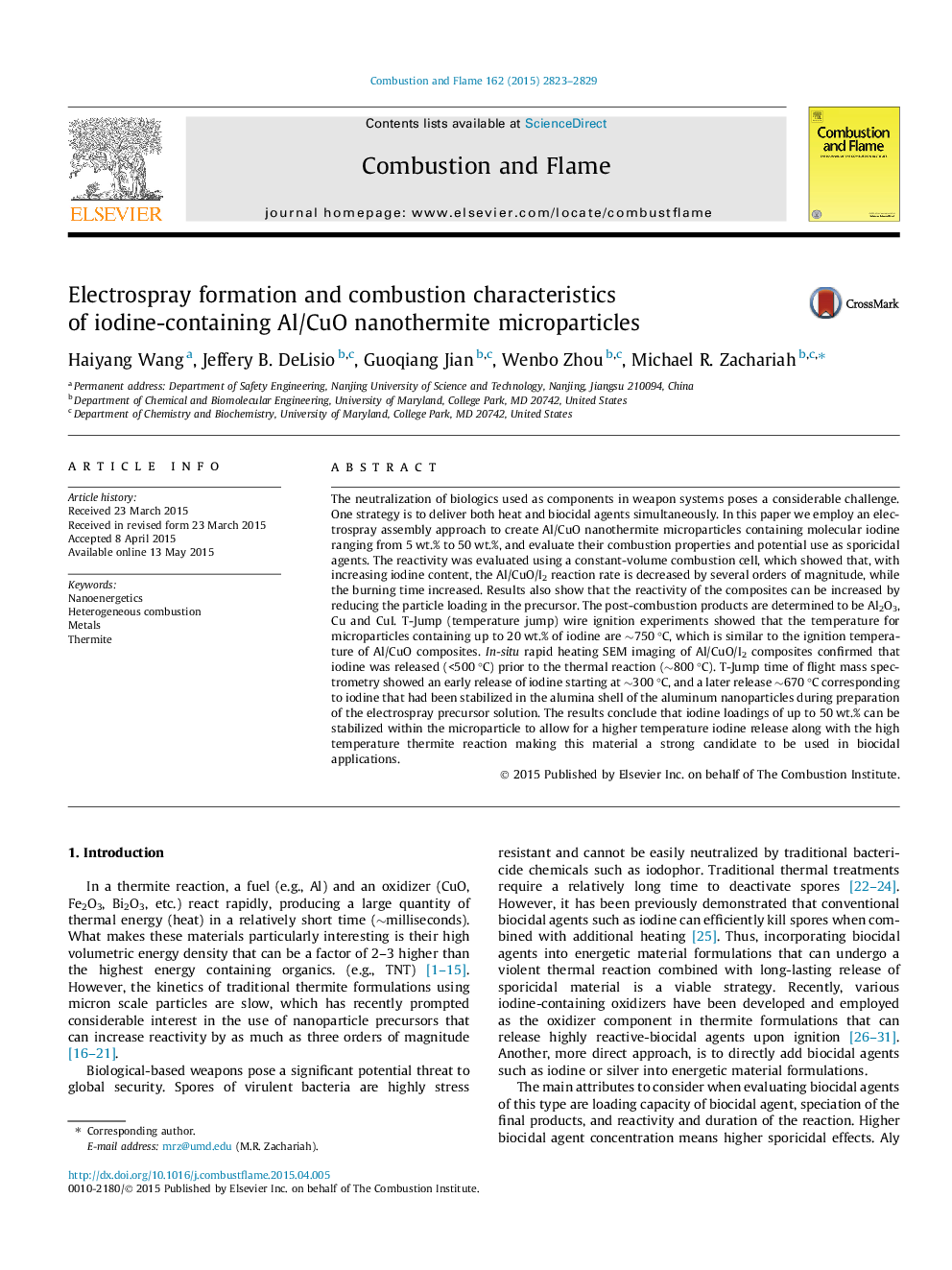| Article ID | Journal | Published Year | Pages | File Type |
|---|---|---|---|---|
| 166252 | Combustion and Flame | 2015 | 7 Pages |
The neutralization of biologics used as components in weapon systems poses a considerable challenge. One strategy is to deliver both heat and biocidal agents simultaneously. In this paper we employ an electrospray assembly approach to create Al/CuO nanothermite microparticles containing molecular iodine ranging from 5 wt.% to 50 wt.%, and evaluate their combustion properties and potential use as sporicidal agents. The reactivity was evaluated using a constant-volume combustion cell, which showed that, with increasing iodine content, the Al/CuO/I2 reaction rate is decreased by several orders of magnitude, while the burning time increased. Results also show that the reactivity of the composites can be increased by reducing the particle loading in the precursor. The post-combustion products are determined to be Al2O3, Cu and CuI. T-Jump (temperature jump) wire ignition experiments showed that the temperature for microparticles containing up to 20 wt.% of iodine are ∼750 °C, which is similar to the ignition temperature of Al/CuO composites. In-situ rapid heating SEM imaging of Al/CuO/I2 composites confirmed that iodine was released (<500 °C) prior to the thermal reaction (∼800 °C). T-Jump time of flight mass spectrometry showed an early release of iodine starting at ∼300 °C, and a later release ∼670 °C corresponding to iodine that had been stabilized in the alumina shell of the aluminum nanoparticles during preparation of the electrospray precursor solution. The results conclude that iodine loadings of up to 50 wt.% can be stabilized within the microparticle to allow for a higher temperature iodine release along with the high temperature thermite reaction making this material a strong candidate to be used in biocidal applications.
